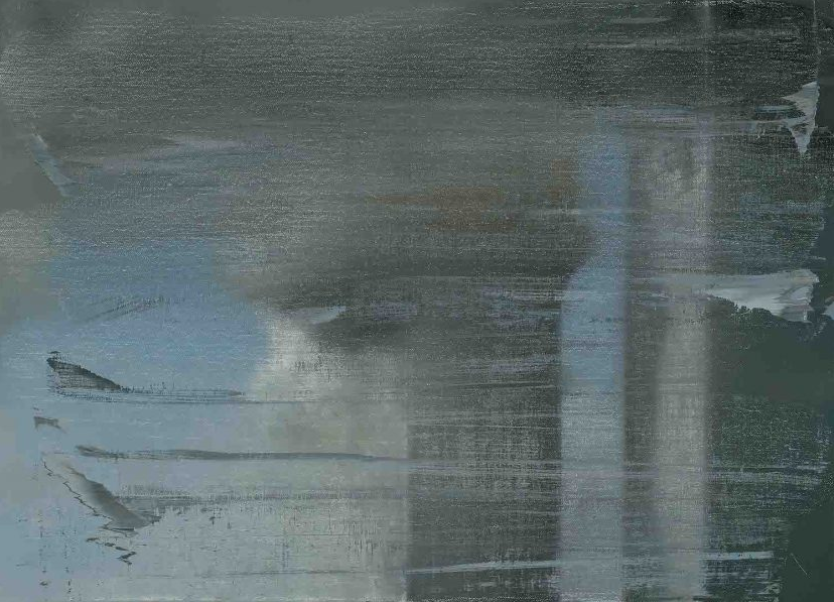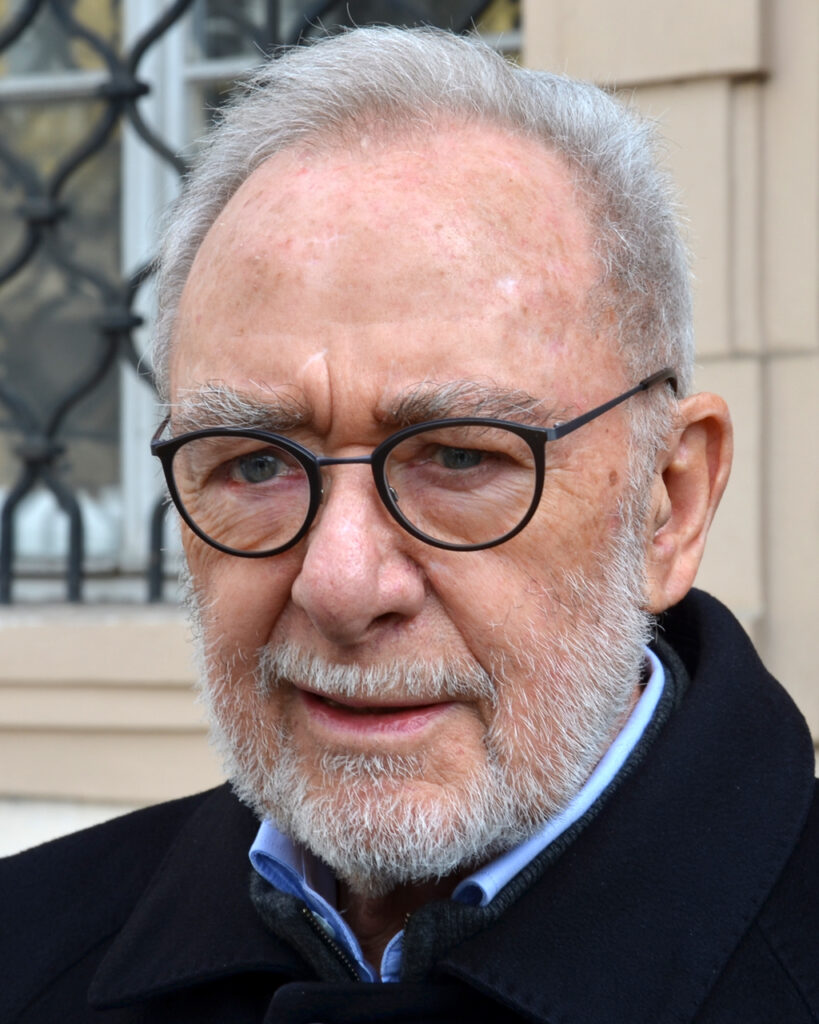
It is a picture balancing on the border of forms, between abstraction and photorealism, between dream and reality, memory and reportage, journalism and landscape. Of course, it is based on television images imprinted in our memory, but from under half-closed eyelids it seems to be an expressive abstraction.
Gerhard Richter was born in Dresden on February 9, 1932 as the first child of Horst and Hildegard Richter. Their daughter, Gisela, came four years later. In many ways, they were an average middle-class family: Horst worked as a teacher at a high school in Dresden, and Hildegard was a bookseller who liked to play the piano. In an interview with Robert Storr, Richter described his early family life as “a simple, orderly world – mother plays the piano and father earns money.” In 1935, Horst took a job as a teacher at a school in Reichenau, a city known in Poland today as Bogatynia, in the then German province of Saxony. It was a drastic change for a family used to the rich cultural life in greater Dresden. However, it was also a move that provided the family with considerable protection against the coming war. At the end of the 1930s, Horst was drafted into the German army, captured by the Allied forces and held as a prisoner of war until the defeat of Germany. In 1946 he was released and returned to his family, who moved again, this time to Waltersdorf on the border with the Czech Republic.
The post-war years caused trouble for the Richter family, as well as for many others. In a 2004 interview, Richter said: “[byliśmy] so alienated we didn’t know how to cope. ” Horst’s membership of the National Socialist Party, to which all teachers under the Nazi rule belonged, made it difficult for him to return to teaching. He eventually found a job at a textile factory in nearby Zittau, before assuming the position of administrator of the distance learning program for an educational institution in Dresden. Richter recalled his early years with a mixture of tenderness and frustration, sadness and excitement. He recalled the house where he was born, on Grossenhainer Strasse in Dresden: “[to] not far from the original Circus Sarrasani building, where – as a young boy – I could see the elephant stalls through the basement windows. ”
He was too young to be drafted into the German army during WWII, but the war had a profound effect on Richter. The family experienced economic hardships and personal losses: Hildegard’s brothers Rudi and Alfred and sister Marianne perished. “It was sad when my mother’s brothers fell in battle. First one, then another. I will never forget how the women screamed, ”recalls Richter. Marianne, who suffered from mental health problems, was starved in a psychiatric clinic, includingimo that Waltersdorf avoided extensive bombing. In an interview with Jan-Thorn Prikker, Richter said: “retreating German soldiers, convoys, low-flying Russian planes shooting at refugees, trenches, weapons lying everywhere, artillery, broken cars. Russians […] plunder, rape, huge camp where we kids sometimes got barley soup. ”
The military fascinated Richter: “As the soldiers passed through the village, I approached them and wanted to join in. When you are twelve, you are too young to understand all this. ” Richter remembers playing in the woods and trenches with his friends, firing forgotten rifles they found: “I thought it was great. […] I was as fascinated as all children ”. The bombings of Dresden left a lasting impression on Richard: “at night they all took to the street in our village 100 kilometers away, Dresden was bombed.
The area where Richter lived came under Soviet control. The Second World War profoundly changed the face of the country where he was born, which had a lasting impact on his education and subsequent artistic practice.
